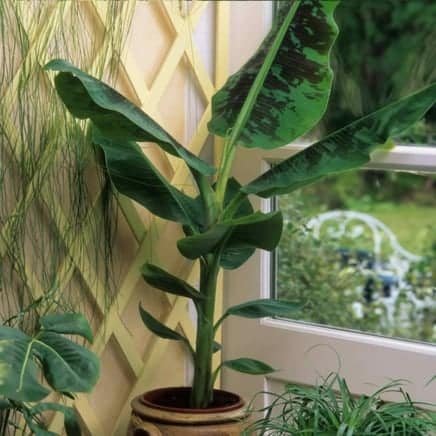If you want to introduce your kids to the joys of gardening, weeding and composting are probably not the best ways to do it. Instead, I recommend starting with the avenue that got me into gardening in the first place—houseplants.
Houseplants are the ideal kid-friendly way to teach about plants and give them a sense of ownership and responsibility without too much technicality. There is also a lot less dirt involved, meaning less mess for you to clean up. Plus, houseplant care is done indoors year-round, so you won’t have to step outside in the cooler months.
Unfortunately, not all plants are suitable for tiny hands. For smaller children, many houseplants are toxic to humans and can cause skin irritation. Some houseplants are also better for beginner gardeners than others.
The good news is there are several houseplants that are both resilient and guaranteed to be intriguing to children. Whether you’re looking for unusual textures, unique shapes, or colorful flowers, these kid-friendly houseplants are the way to go.
Dwarf Cavendish Banana Tree
The compact size of Dwarf Cavendish Banana Trees means they will happily grow in smaller gardens, either planted in the ground or kept in containers. Grow outdoors in USDA Zones 8-11, or plant in pots in cooler climates for winter protection.
Spider Plant

The spider plant is one of the most (if not the most) forgiving kid-friendly houseplants. In the right conditions, the plant will put out spider-like offshoots that dangle from the main plant, hence the common name.
These not only look captivating to kids but the offshoots can also be snipped off and planted in their own pots for propagation. This creates a fun experiment in plant growth as they watch a new spidery plant grow from the original over time.
Spider plants adapt well to different lighting conditions, from bright indirect sunlight to low light, so they’re perfect for playrooms. They’re also quite tough and can handle a missed watering or two, making them less likely to wilt and disappoint young gardeners.
Burro’s Tail
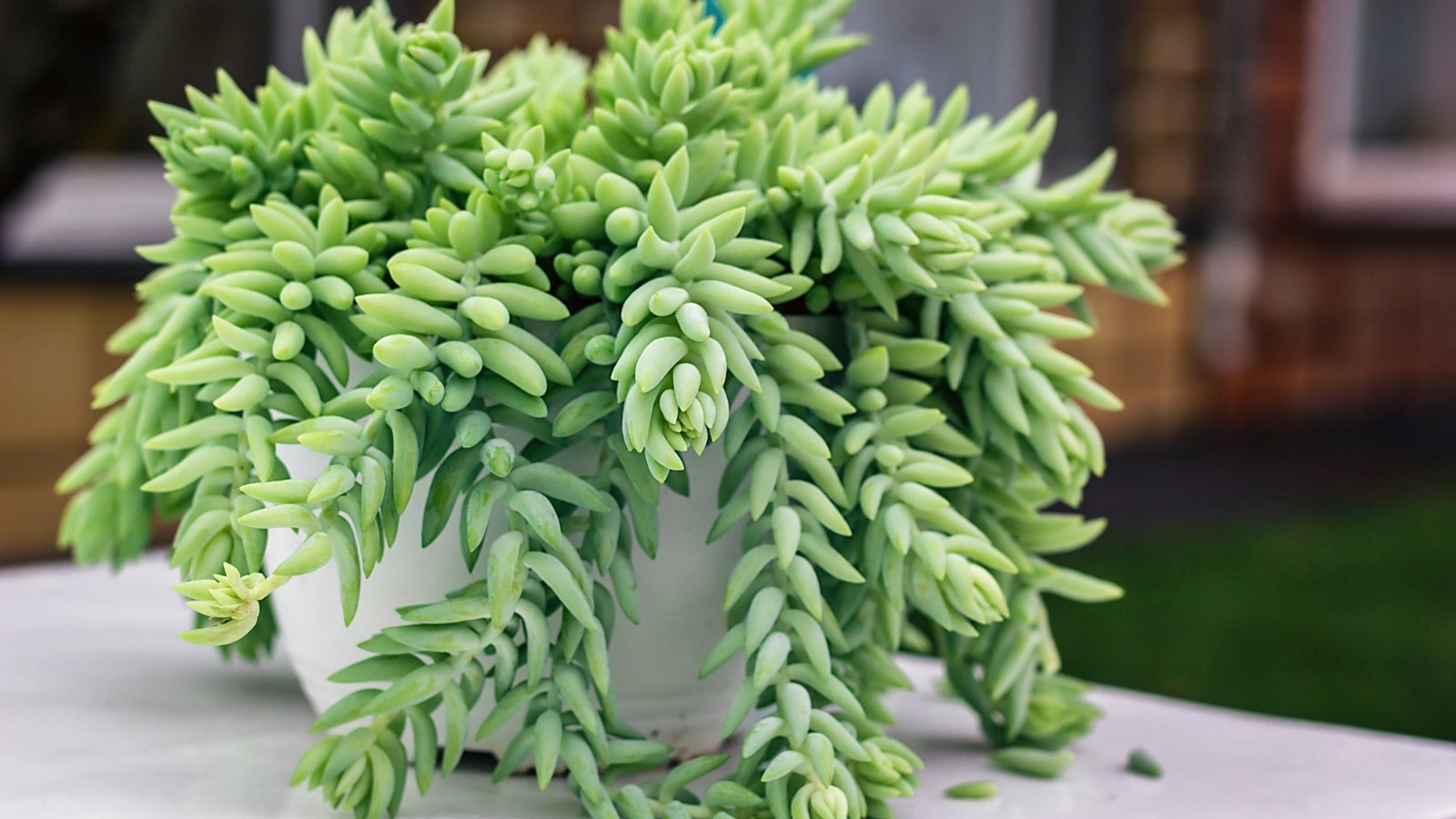
This succulent has a unique trailing habit that’s sure to make it a hit with children. The thick and fleshy leaves are densely packed along trailing stems that resemble the tail of a donkey, where it gets its name.
While the leaves can fall off if handled too roughly, this is also an opportunity for kids to propagate the plant. Simply pop the leaves on top of moist soil and watch new roots grow from the base. And if you have the right amount of light, they’ll even produce colorful flowers in summer.
Burro’s tail prefers bright indirect light with some gentle, direct morning sun. Its drought-tolerant nature (thanks to the succulent leaves) means it can go for weeks without water, allowing kids to learn about watering needs.
African Violet
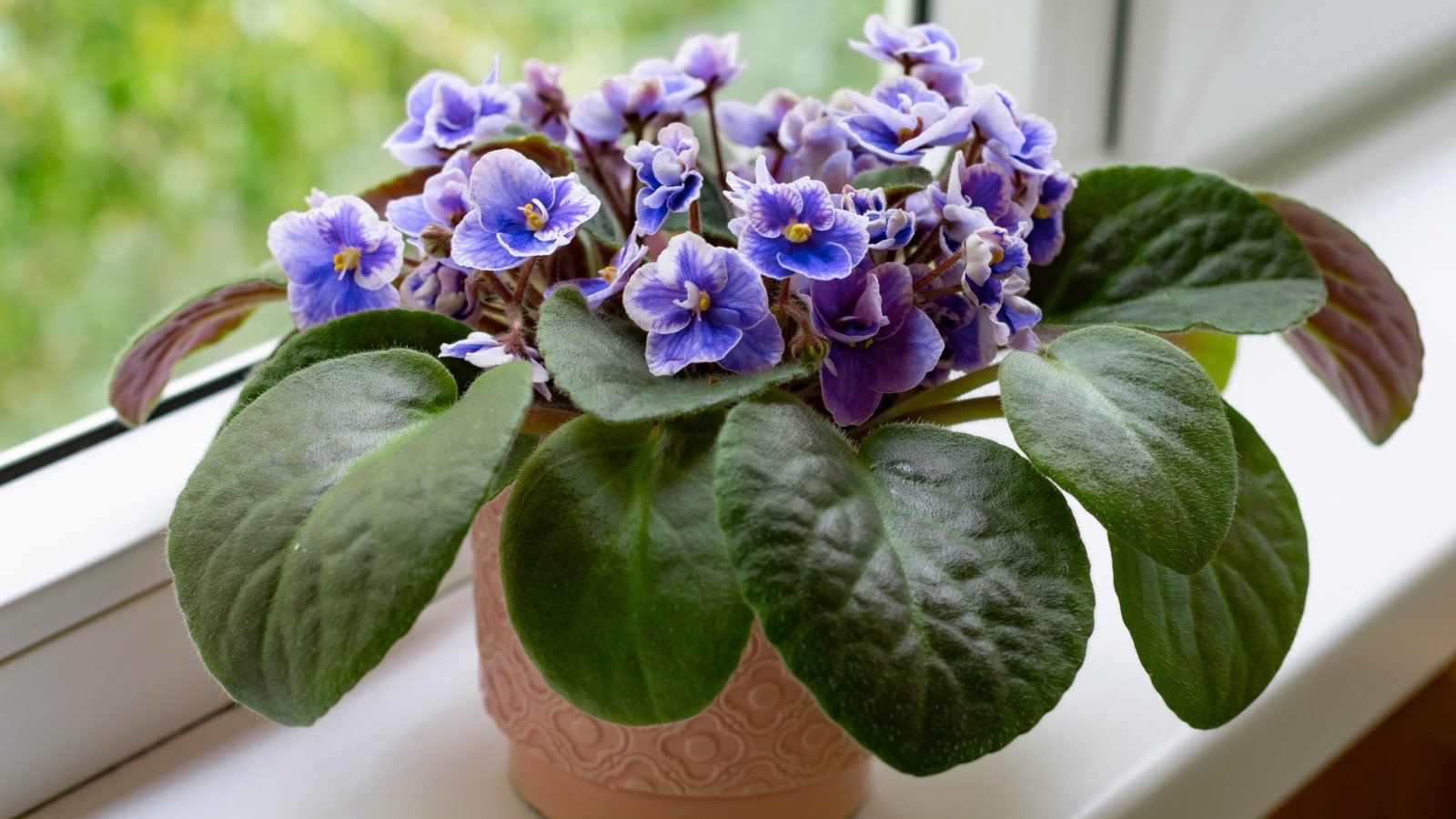
African violets are compact, kid-friendly houseplants that produce clusters of flowers in dazzling shades of purple, pink, and white, a pop of color. The fuzzy leaves add a sensory element that children will also enjoy, encouraging them to interact with the plant.
Despite their delicate appearance, African violets are relatively easy to care for, provided they receive the right conditions. The key to keeping these plants happy is maintaining consistent moisture in the soil without letting it become soggy, so you or your kids will need to pay close attention to drainage. Much of this stems from the loose, crumbly soil these violets prefer.
When watering, avoid splashing the leaves, as this can lead to spots on the foliage. Instead, focus the water on the soil only.
Sensitive Plant
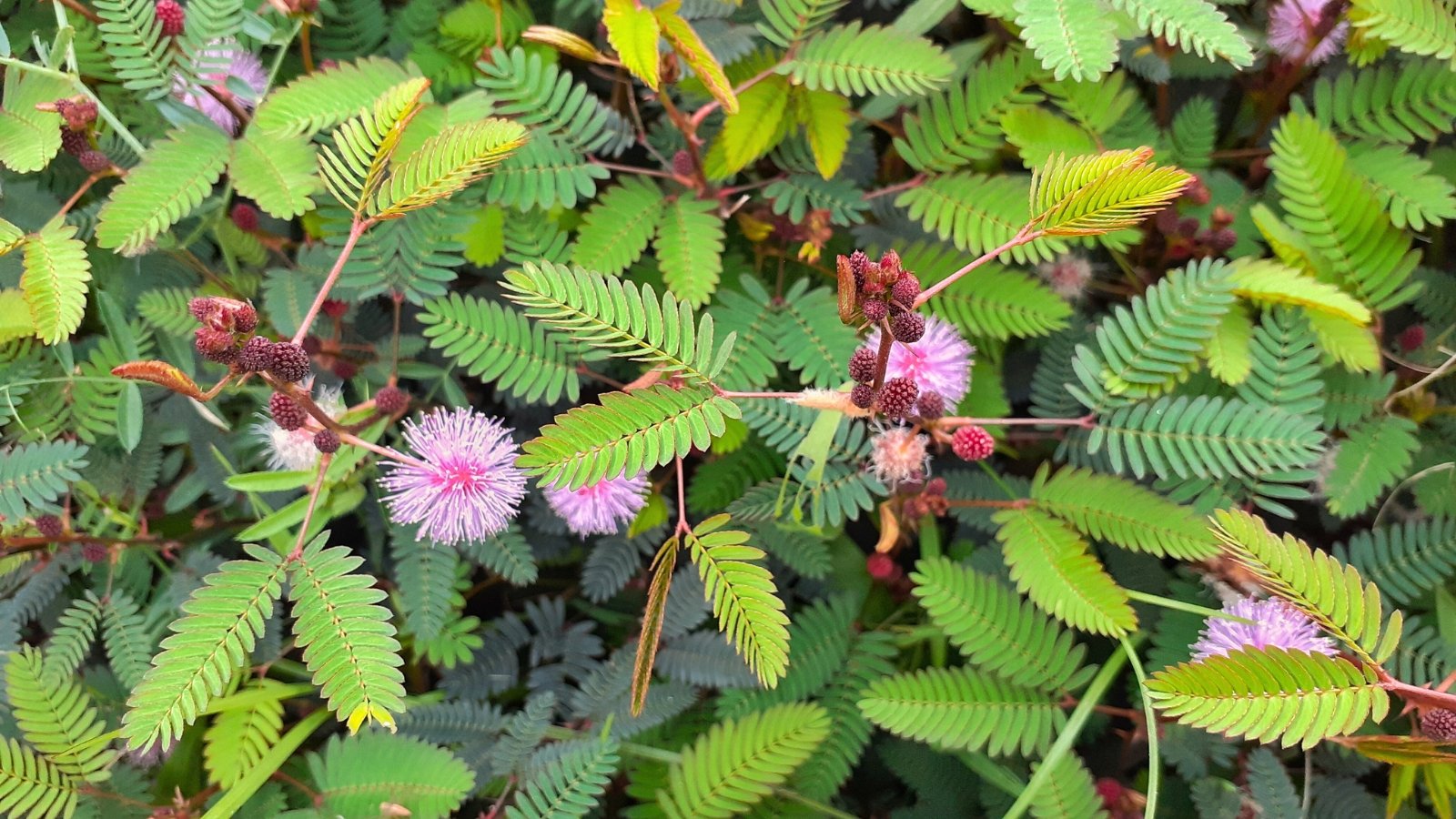
The sensitive plant is probably one of the most exciting kid-friendly houseplants due to its ability to respond to touch. When you gently brush against the leaves, they quickly fold up, providing endless entertainment for children.
Sensitive plants also produce small, fluffy pink flowers that can add an extra layer of interest for young gardeners. However, they need optimal conditions (particularly in light and temperature) if you want to see them flower.
These plants are a bit more particular than some other houseplants, requiring regular watering and bright sun from an eastern window. While the touch element is great for kids, I would keep track of the care yourself if you want to keep the plant alive long-term.
Hoya
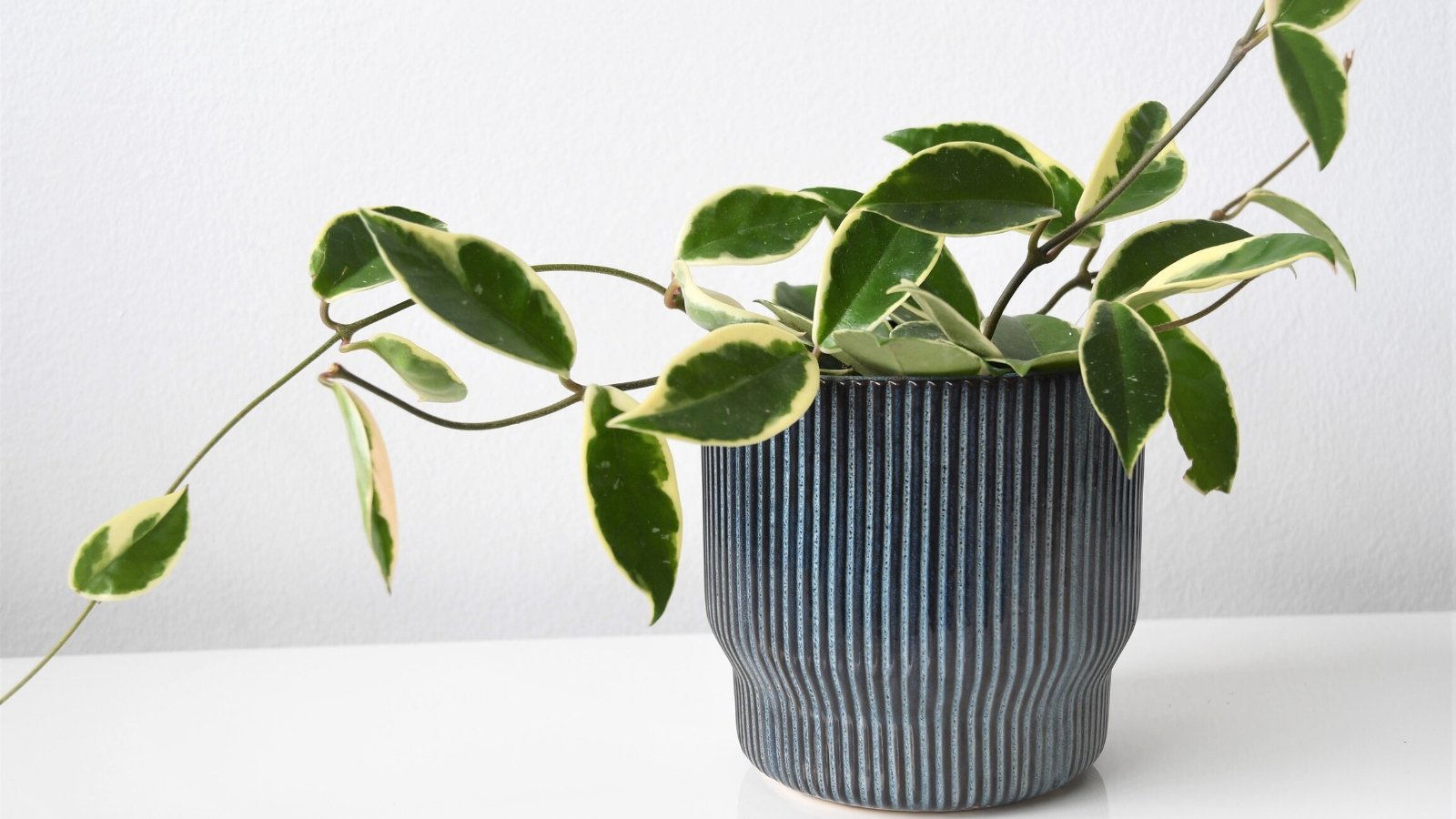
Hoyas have waxy leaves that come in various shapes and sizes, often with interesting variegation patterns. These waxy leaves (and their waxy flowers) are what give them the common name wax plants.
What makes hoyas interesting for kids is the way they flower. The waxy blooms look almost artificial, and the fact that these flowers are fragrant adds another sensory dimension to the species. Not all of them smell good, though; the scent changes as the flower ages.
Hoyas are relatively low-maintenance and can adapt to a range of indoor conditions, making them suitable for young plant lovers who are still learning. They prefer to dry out between waterings, which means they can handle a bit of neglect without too much trouble.
Bird’s Nest Fern
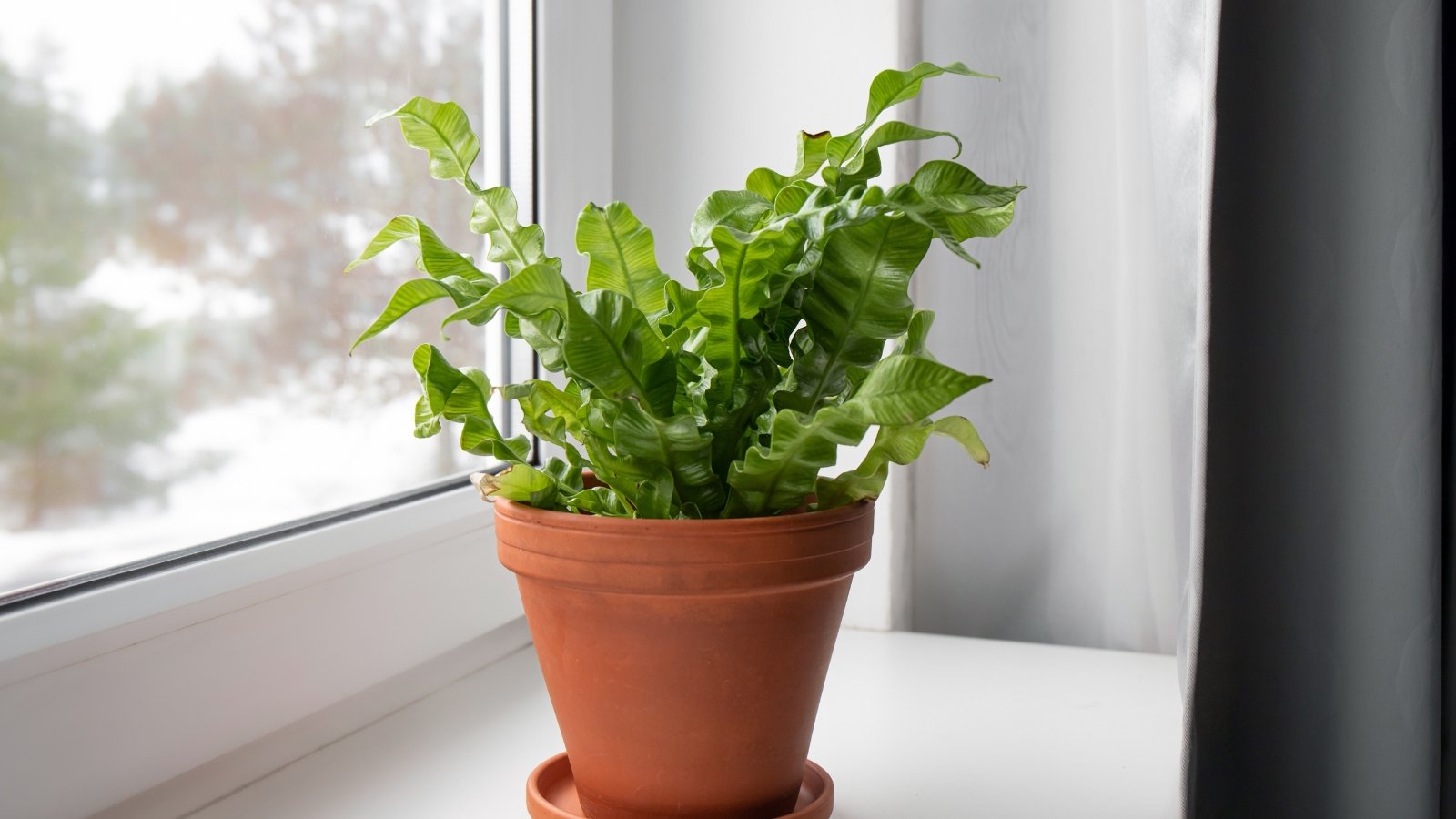
For kids fascinated by unusual plant shapes, the bird’s nest fern should be your pick. Unlike typical ferns with fine fronds, this houseplant has large leathery leaves that radiate outwards from a central rosette, resembling a bird’s nest.
This fern thrives in low to medium light, ideal for rooms with less natural sunlight. The plant prefers consistently moist soil, a great way for kids to learn about the importance of regular watering. However, it’s forgiving enough to withstand occasional forgetfulness, which can boost confidence as they develop their plant care skills.
Smaller bird’s nest ferns are great for shelves or countertops, but larger plants really make a statement indoors. Look for a mature plant with long fronds if you want to fill empty spaces in your home.
Peperomia
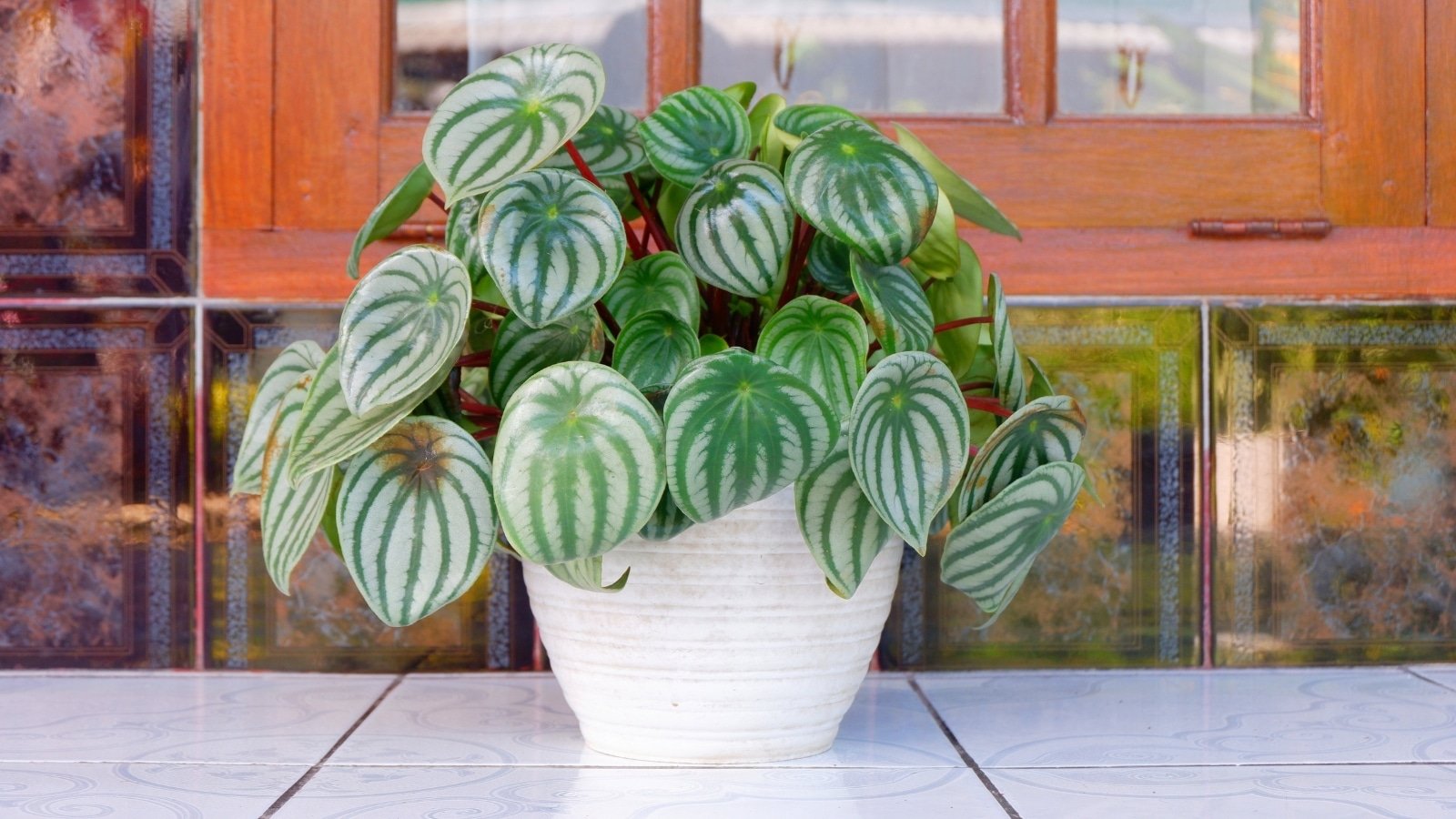
This species comes in a variety of interesting leaf shapes and colors, so much so that two plants can look completely unrelated. They are compact and manageable plants perfect for both small hands and small spaces.
These plants are resilient and can handle a range of lighting conditions without struggle. This flexibility means kids can place their peperomia almost anywhere in the house and still see it thrive.
One of the best things about growing peperomias is the variety they offer. Give your kids the chance to choose their own favorite species, allowing them to craft a collection that is truly their own.
Calathea
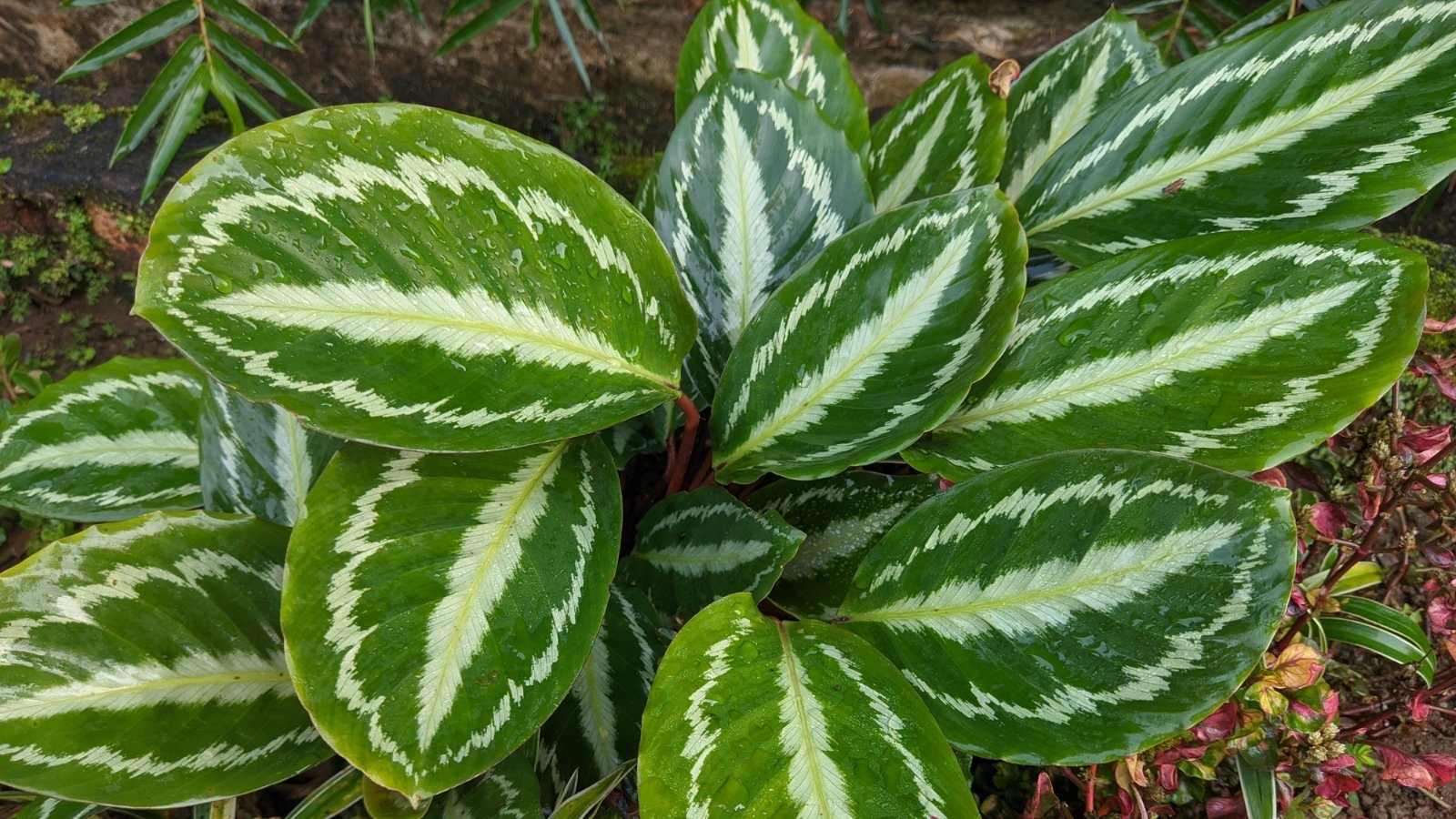
Calatheas are known and loved for their foliage. The leaves display intricate patterns that look almost unreal, perfect for kids drawn to vibrant colors and bold designs.
Calatheas require a bit more attention than some other houseplants and have a reputation for being fussy. However, this care level can be an opportunity for older kids to learn about the importance of creating the right environment for plants to thrive.
The leaves often fold up at night and open again in the morning, explaining the common name, prayer plants. This movement is fascinating for kids to observe, turning plant care into a daily routine they look forward to.
Baby’s Tears
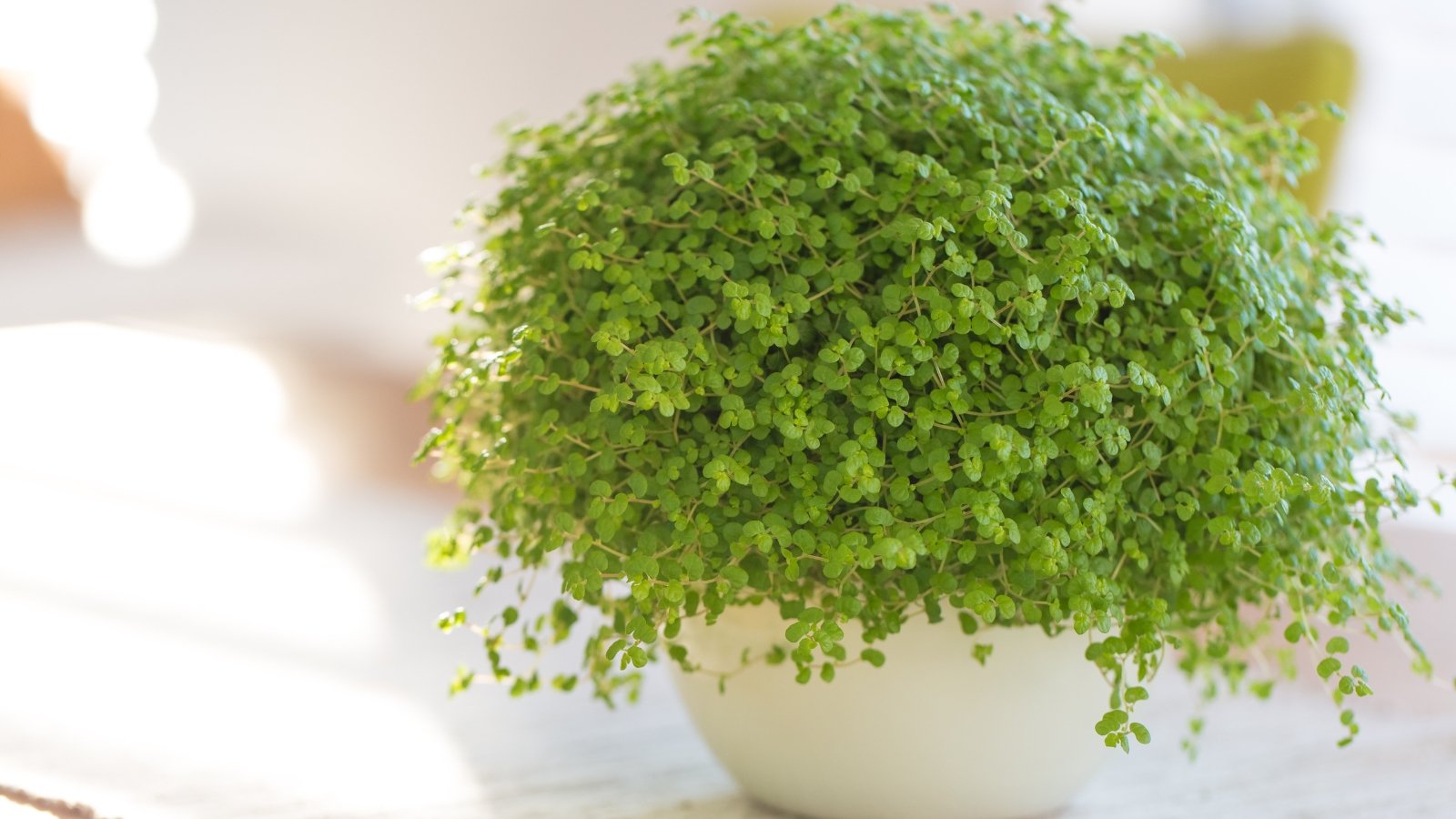
Baby’s tears has an ominous name considering the title of the article, but it is actually an ideal kid-friendly houseplant. This delicate-looking plant has tiny round leaves that grow densely along creeping stems. It creates a soft, carpet-like effect that kids will love to touch.
Despite its delicate appearance, baby’s tears is relatively easy to care for. They thrive in medium to bright indirect light and need consistently moist soil, a good match for kids who are keen to water their plants regularly.
If you’re looking for a weekend gardening project, this houseplant is perfect for terrariums. Pair it with small figurines to create tiny enchanting landscapes inside glass jars.
Ponytail Palm
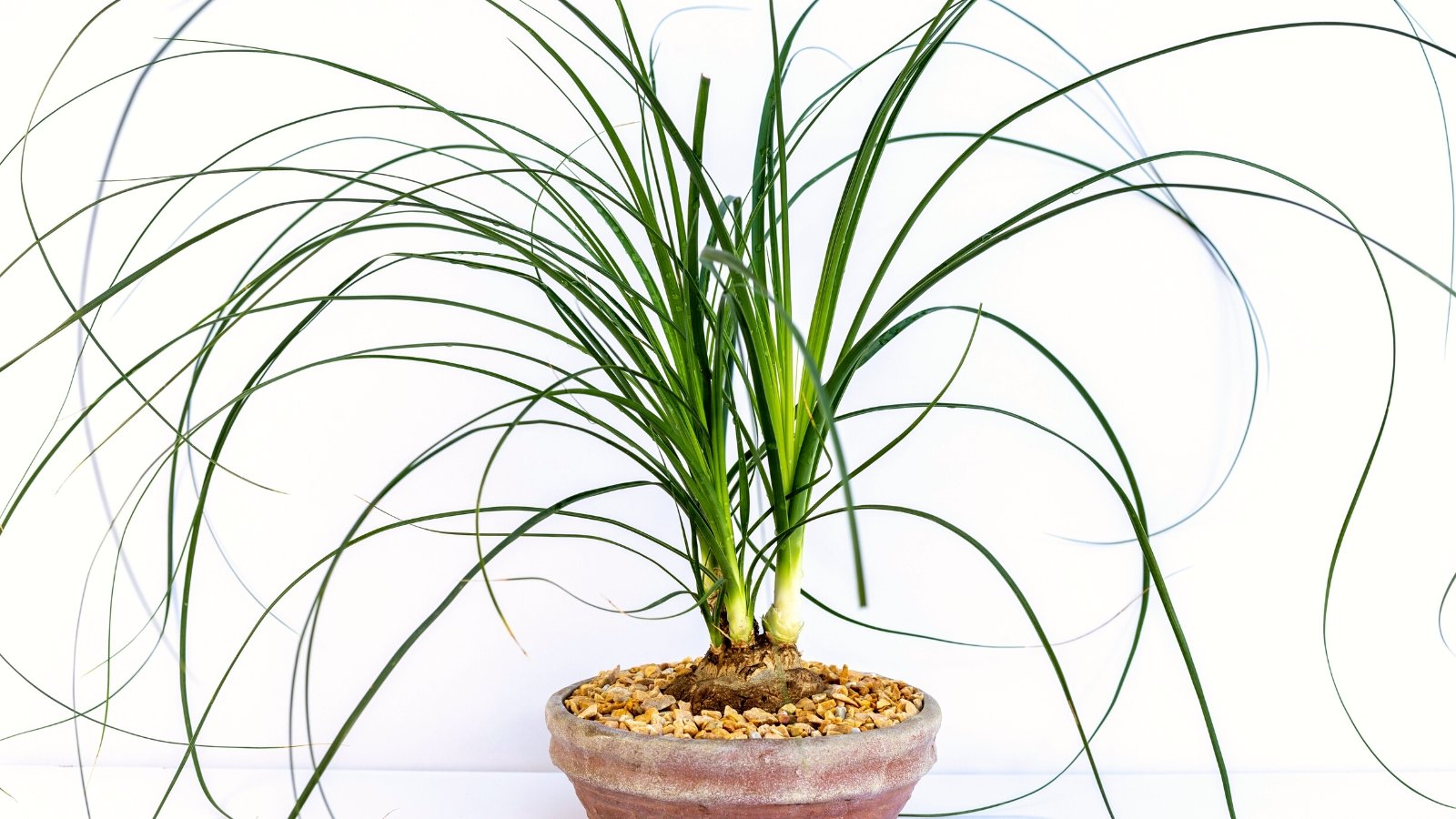
The palm looks like a tree conjured straight out of a children’s book. It has a bulbous stem and long cascading leaves that resemble a ponytail, explaining its name. This plant is perfect for kids who want to grow something quirky and unique.
Ponytail palms thrive in bright light but can tolerate lower light conditions. They can grow quite large but take a while to mature, so it’s best to start out with a bigger one if size is a feature you’re looking for.
The ability to go for extended periods without water (due to the water storage in the stem) provides a stress-free experience for beginners.
Areca Palm
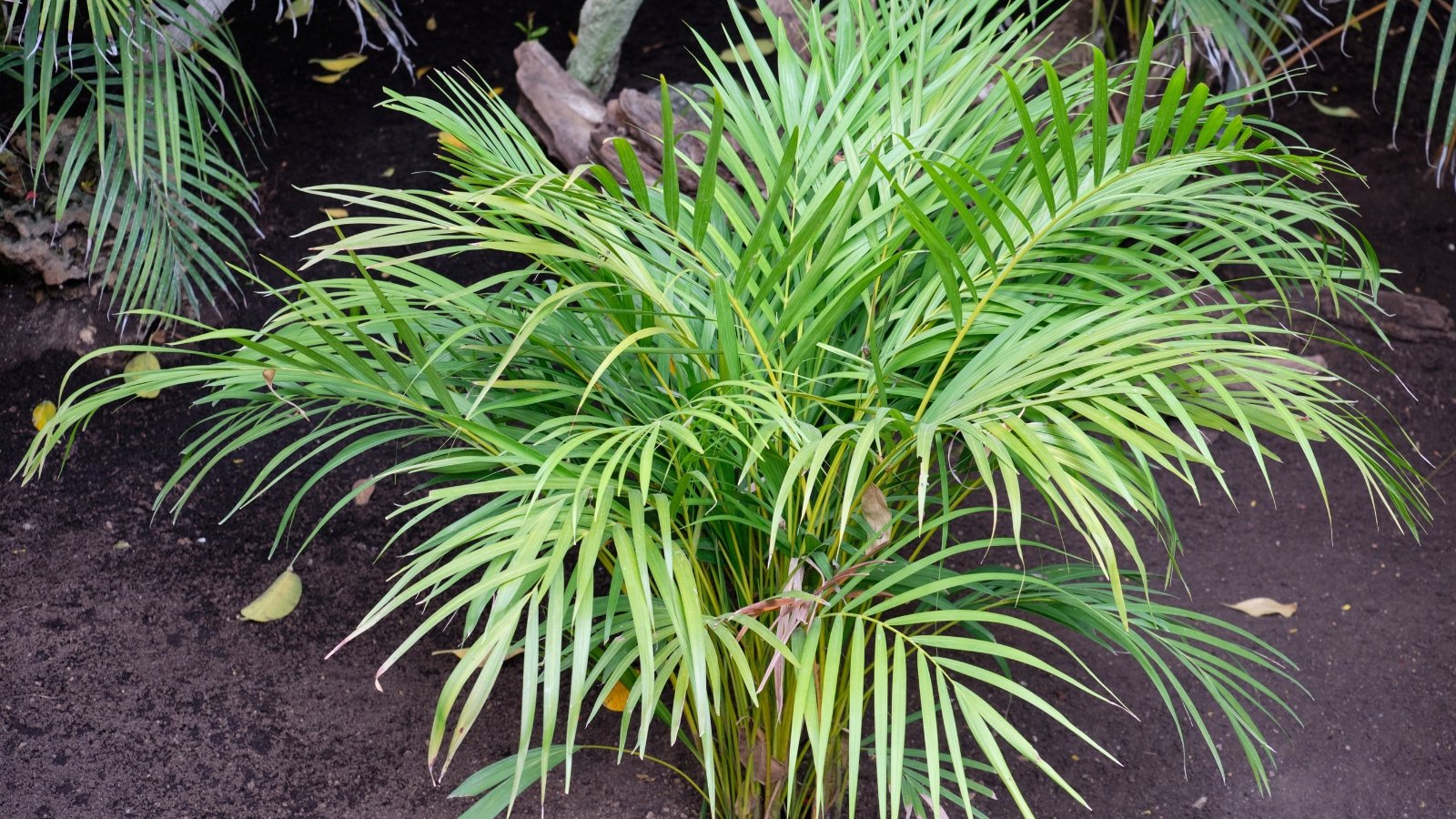
To bring a touch of the tropics indoors, you can’t go wrong with an areca palm. This palm can grow quite large over time (and not as slowly as the ponytail palm), perfect for empty corners in living rooms or bedrooms.
Areca palms are great for teaching kids about the importance of consistent care and environmental conditions. They need bright indirect light year-round and benefit from regular watering to keep them slightly moist but not waterlogged.
The look of this palm creates a mini indoor jungle that could look right at home in a themed bedroom.
Inch Plant
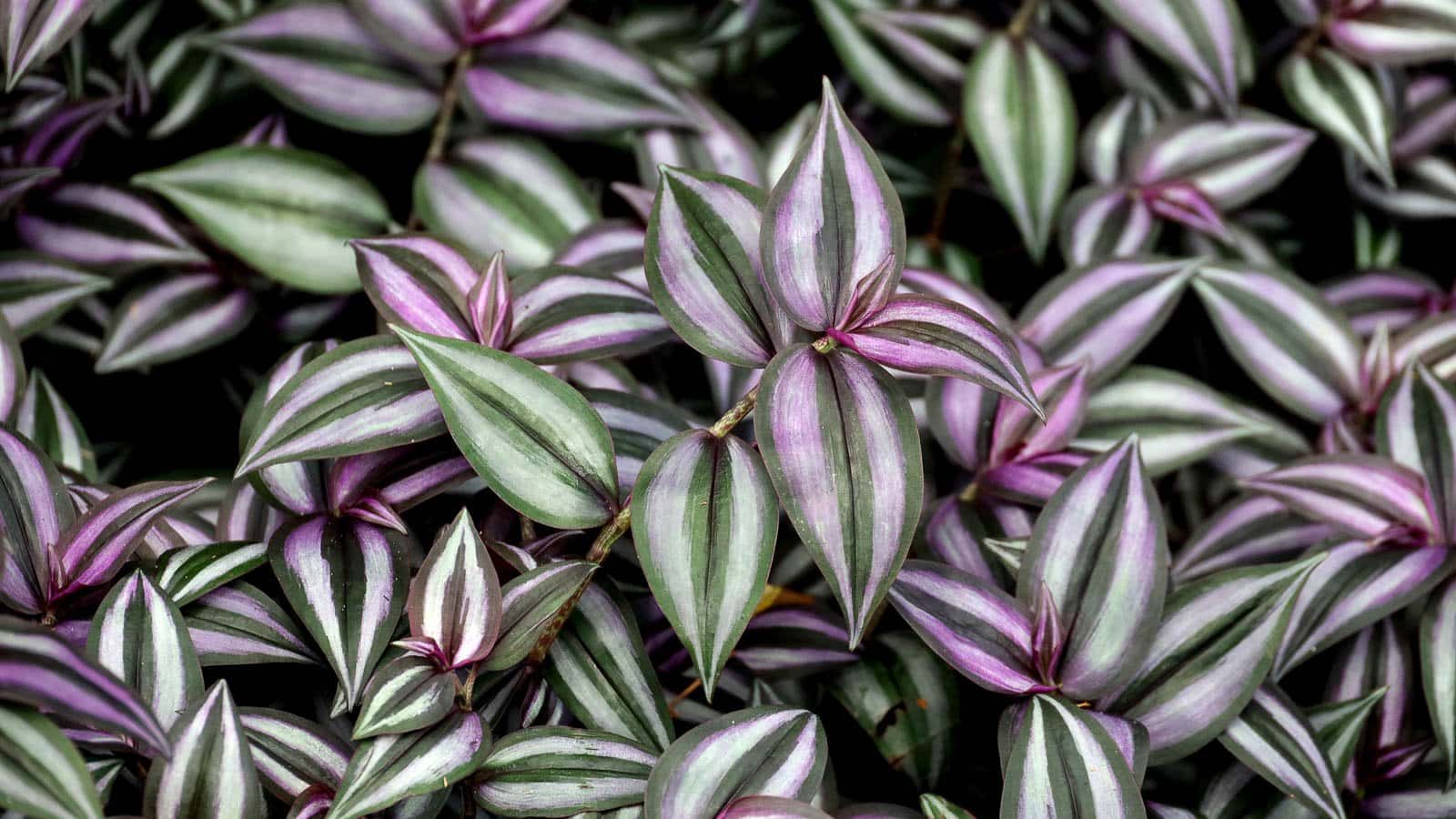
The inch plant is known for its colorful foliage. The leaves are striped with shades of purple and green and its trailing habit makes it perfect for hanging baskets or as a cascading specimen on a shelf, where its colorful vines can be admired up close.
Inch plants are incredibly easy to care for and grow rapidly, making them ideal for young gardeners starting out. They thrive in bright indirect light but can also tolerate lower light conditions (but their colors may not be as strong).
These plants are quite forgiving when it comes to watering. They prefer the soil to dry out a bit between waterings, which reduces the risk of overwatering and subsequent root rot. The sap can cause irritation in people with sensitive skin, so it’s best to keep this one away from small kids.
Cast Iron Plant
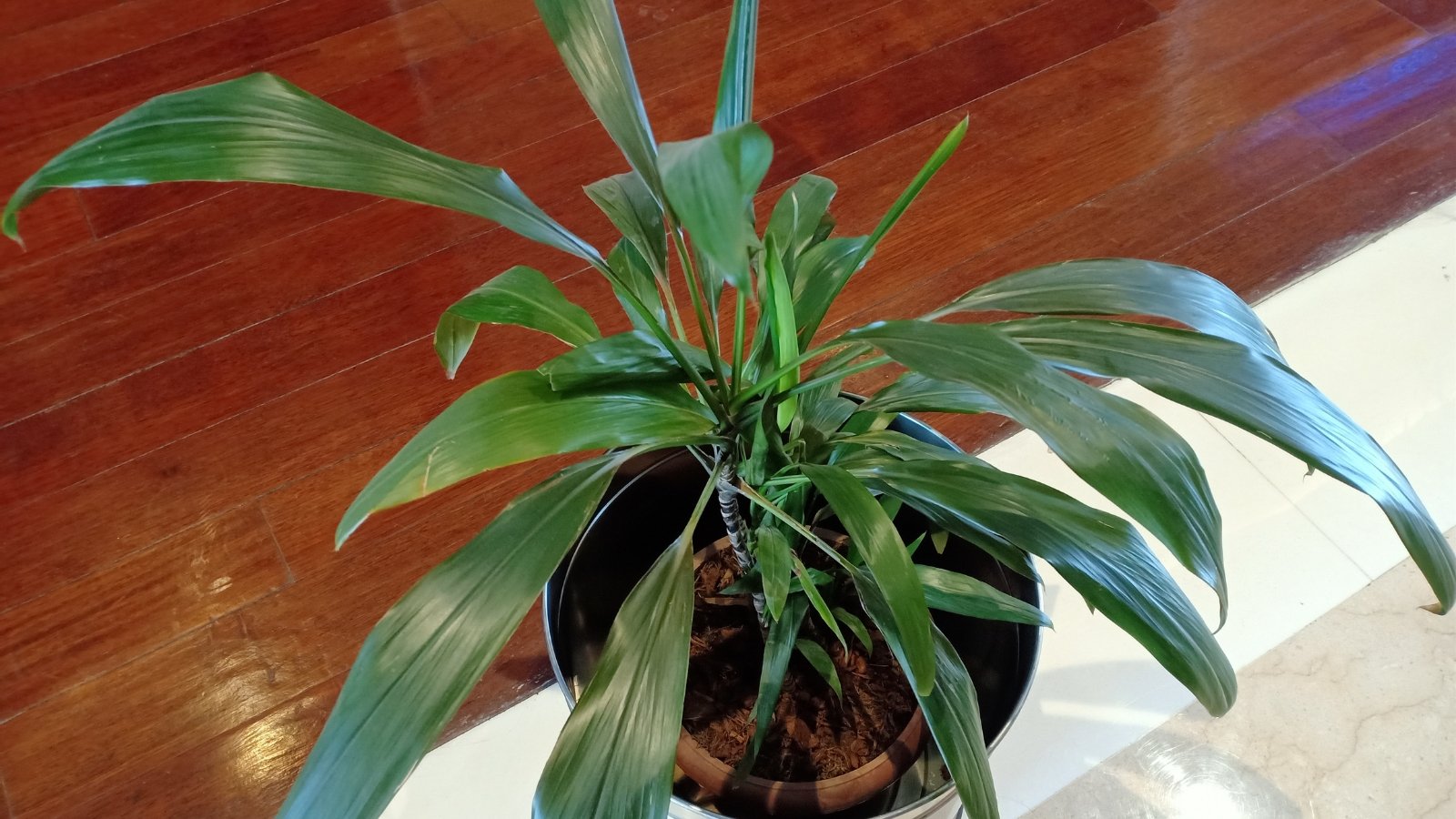
The cast iron plant lives up to its name, one of the most resilient houseplants on the market. Its broad leaves are not only attractive but also nearly indestructible, making it perfect for young kids who are still learning how to care for plants.
This species’ tolerance for neglect makes it ideal for children who might not always remember to water or place them in the optimal spot. It prefers low to medium light and can thrive in less-than-ideal indoor environments.
For kids, knowing their plant is tough and resilient can build confidence and a sense of achievement as they watch it grow over time.
Nerve Plant
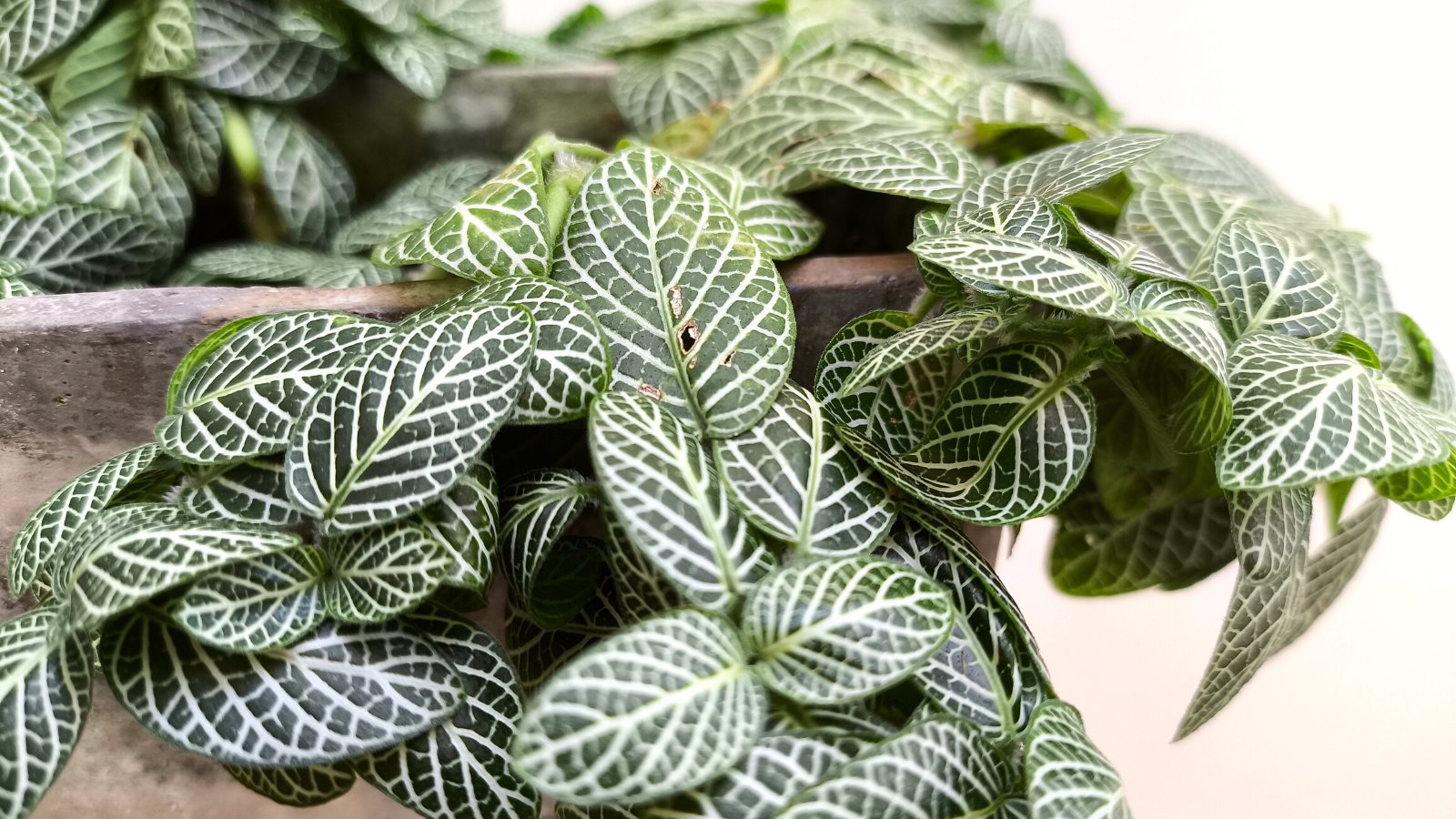
Nerve plants sport colorful veined patterns on their leaves that look just like nerves. They have white, pink, or red veins that add a pop of color, especially when grouped with other houseplants.
Their compact size makes them perfect for small spaces, such as a windowsill or a desk. You can also pop them into a terrarium, as they thrive in high-humidity environments.
While nerve plants can be a bit more temperamental than some other species, they offer a great learning opportunity for kids. Their leaves will wilt quickly if they are too dry, but bounce back rapidly after watering—a great visual cue for children.
Polka Dot Plant
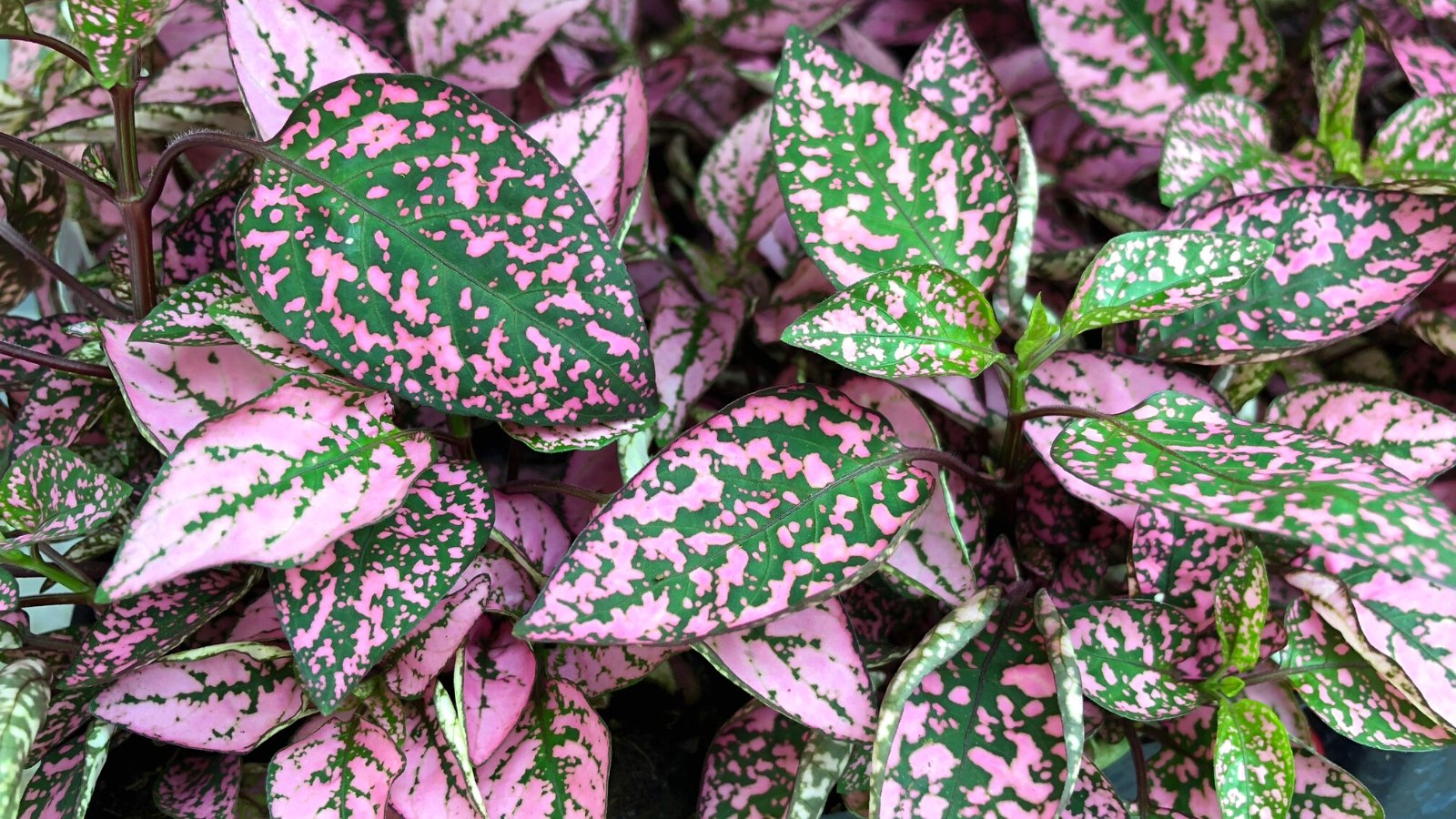
This fun choice is perfect for children who love vibrant patterns, much like the nerve plant. The leaves of the polka dot plant are splashed with pink, red, white, or a combination. This lively appearance is sure to attract the attention of both kids and adults.
The variety of colors available allows children to choose a combination that suits their personality. Or you can choose a few different ones to start a colorful collection.
Polka dot plants grow quickly but can be pruned to maintain a compact shape. This is also a good time to give kids hands-on experience in maintenance that goes beyond simple watering.
Christmas Cactus

If you’re choosing a plant to give as a gift around the holidays, try the famous Christmas cactus. It has flat stems with unique shapes, but the real star is the bright tubular flowers that signal the start of the festive season.
This kid-friendly houseplant enjoys a bit more moisture than typical cacti, so regular watering is necessary to keep it happy. However, it’s important to let the soil dry out slightly between waterings to avoid rot.
With the proper preparation routine in place, Christmas cactus flowers during the winter months, adding a splash of color when it’s most needed.
Boston Fern
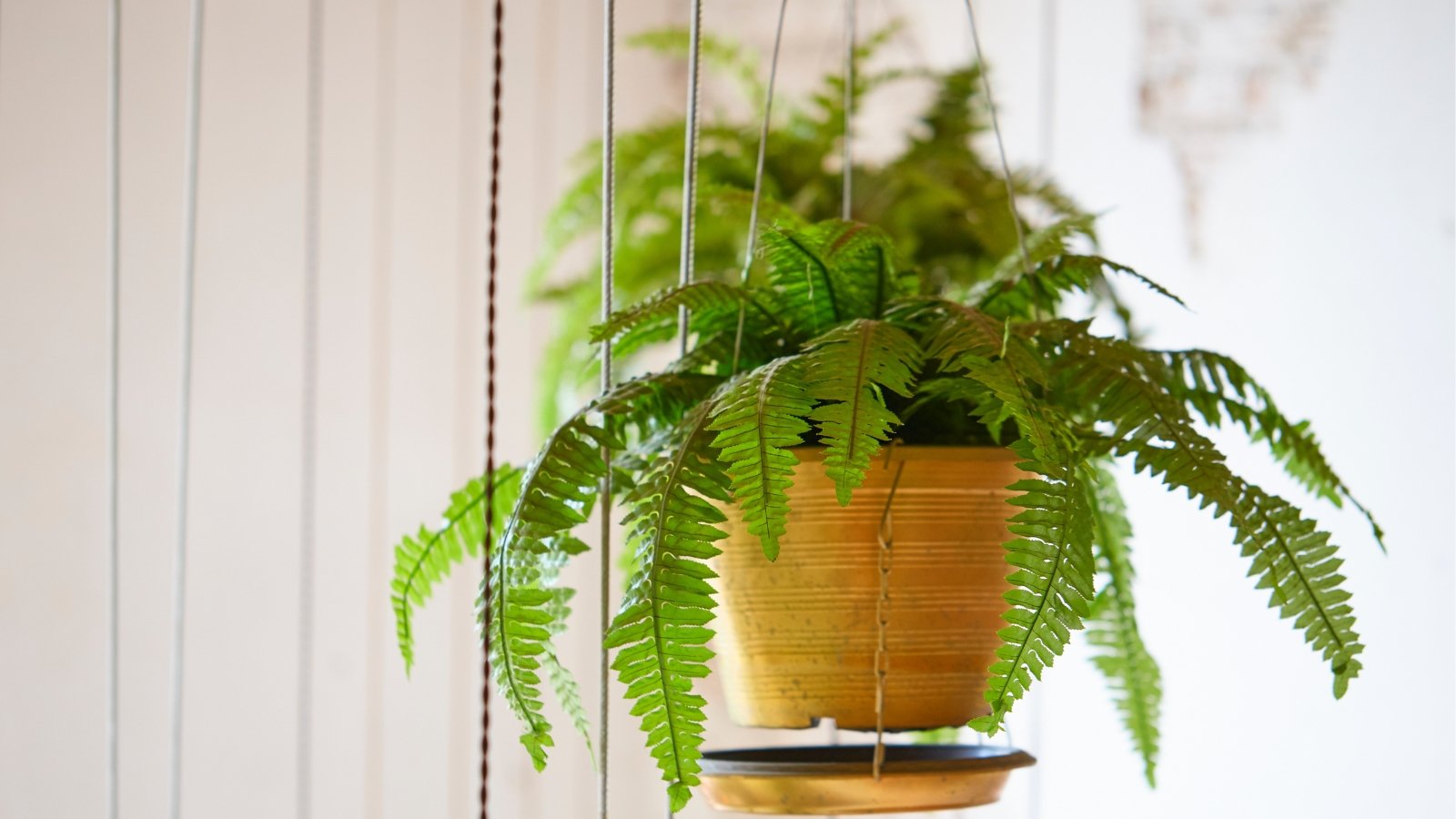
The Boston fern is a classic kid-friendly houseplant with lush fronds and a recognizable look. Its vibrant color and impressive shape look great in any room, especially if you’re after a retro feel.
Boston ferns can be easy to care for but need to start out in the right environment. They thrive in bright indirect light (direct sun will burn the foliage) and appreciate humidity. Look for places with naturally higher humidity, such as bathrooms.
They require consistent moisture, so regular watering is key to stopping the fronds from becoming brown and crispy. When they’re healthy and lush, the foliage can be fun to touch and observe, especially as new fronds unfurl.
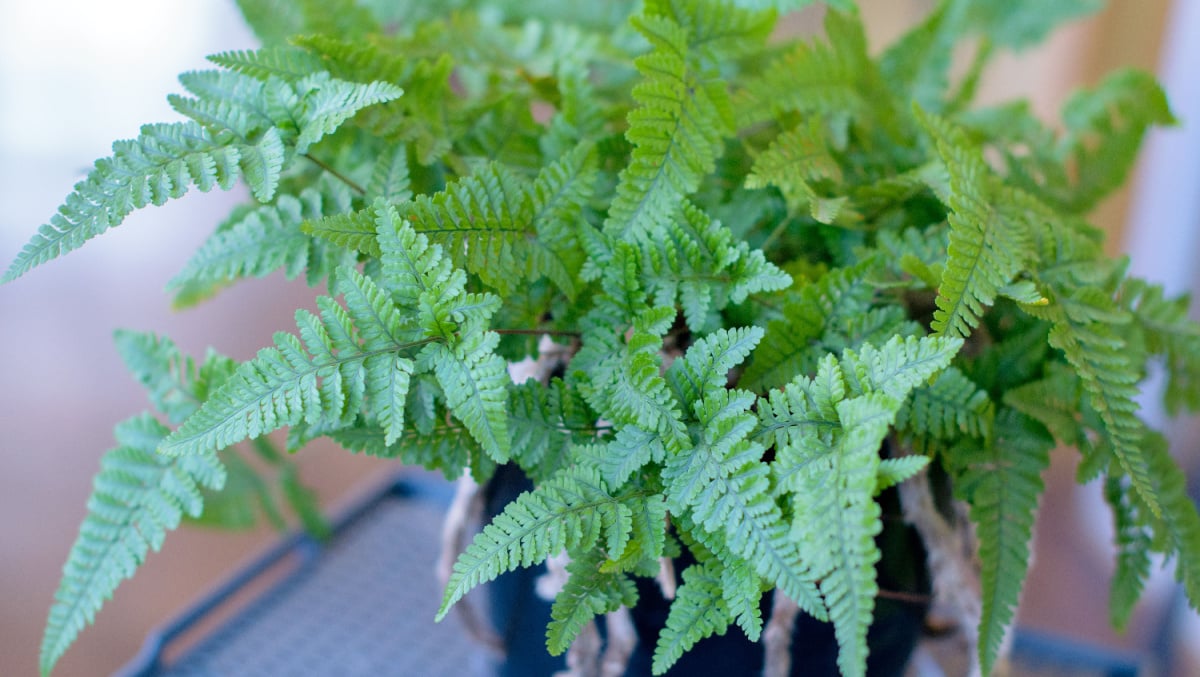
This fern has a whimsical name and an equally whimsical look. The rabbit’s foot fern is named for its fuzzy rhizomes that creep over the soil surface and edges of the pot. They provide a fun and interactive element that will keep kids interested.
While the rhizomes are likely to be the attraction for kids, the fronds are just as beautiful. They have a delicate look that matches well with softer interiors.
It’s important not to overwater, so teach kids to check the soil moisture before watering. Like the Boston fern, this species also enjoys a humid environment, so place it in a bathroom or kitchen.
Begonia
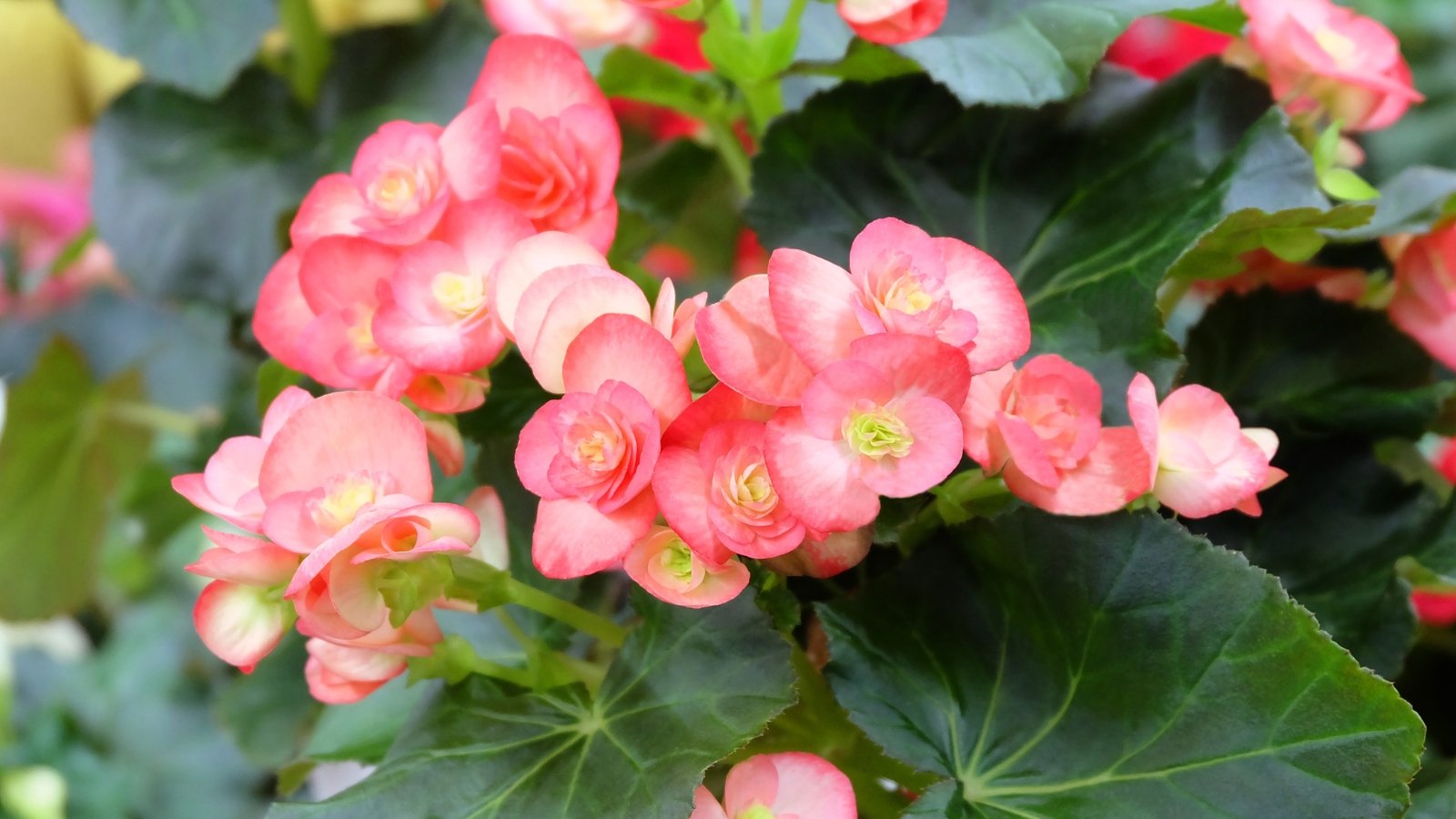
Begonias are a diverse group with vibrant flowers, another option for collectors. The leaves can be speckled, striped, or even have a metallic sheen, and the flowers come in almost every color. Begonias offer endless possibilities for creating a lively indoor garden from just one species.
The most common species to grow as a houseplant is the rex begonia, known for its foliage. Others, like wax begonias, are known for their blooms. However, some species are considered mildly toxic, so save this species for older kids to prevent accidental ingestion.
Watching a Begonia produce new leaves or blooms can be incredibly rewarding, keeping young gardeners engaged and excited about their plant’s progress.
Banana
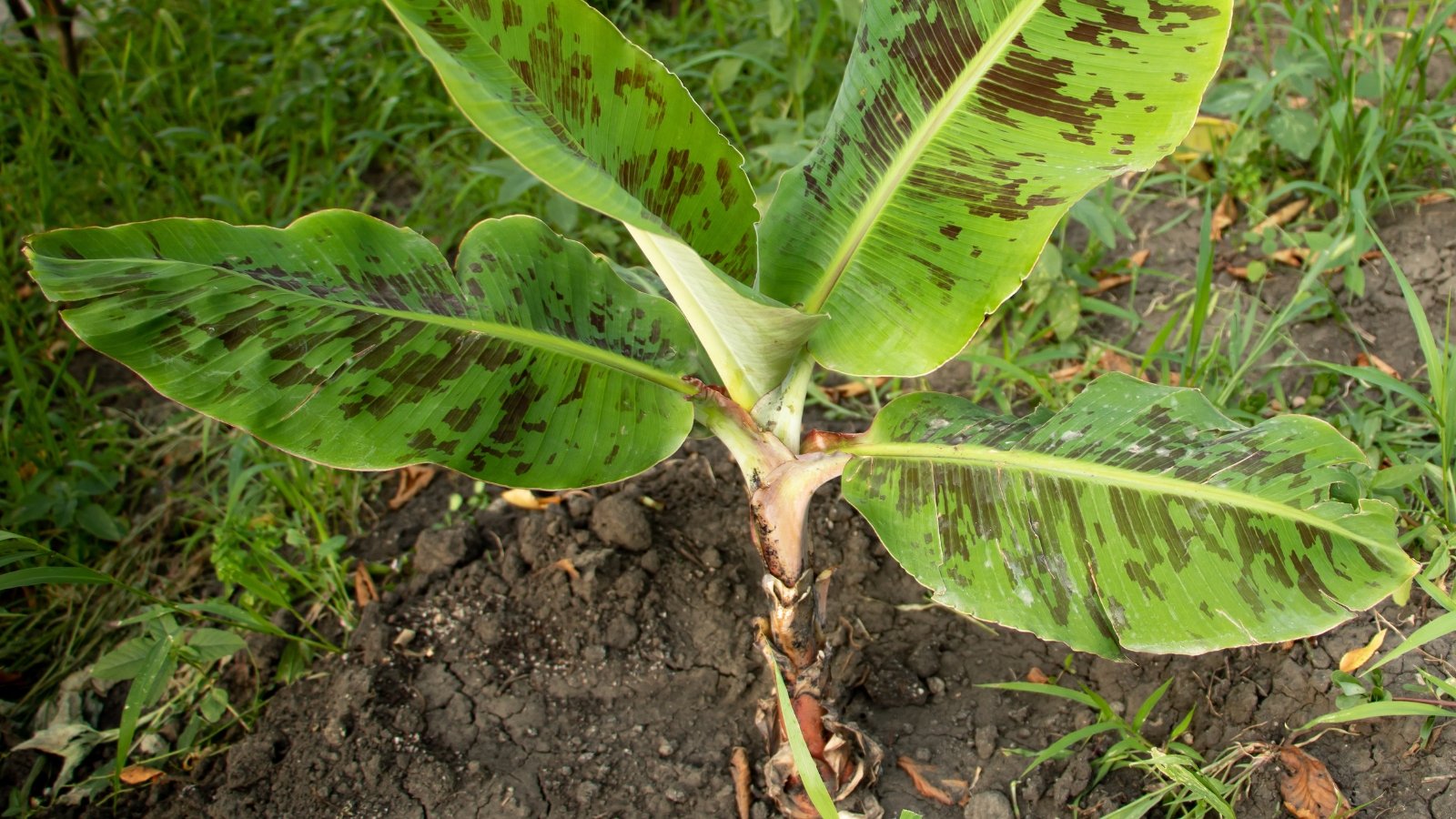
Bananas are tropical perennials with an exotic look that you may not expect to see indoors. But the large, paddle-shaped leaves are great for filling empty corners in your home if you have enough direct sun to keep them happy.
Although it may not produce edible fruit indoors, the impressive size and tropical appearance are more than enough to make it a standout. Purchase smaller plants that will grow taller to keep kids excited about houseplants.
Lipstick Plant
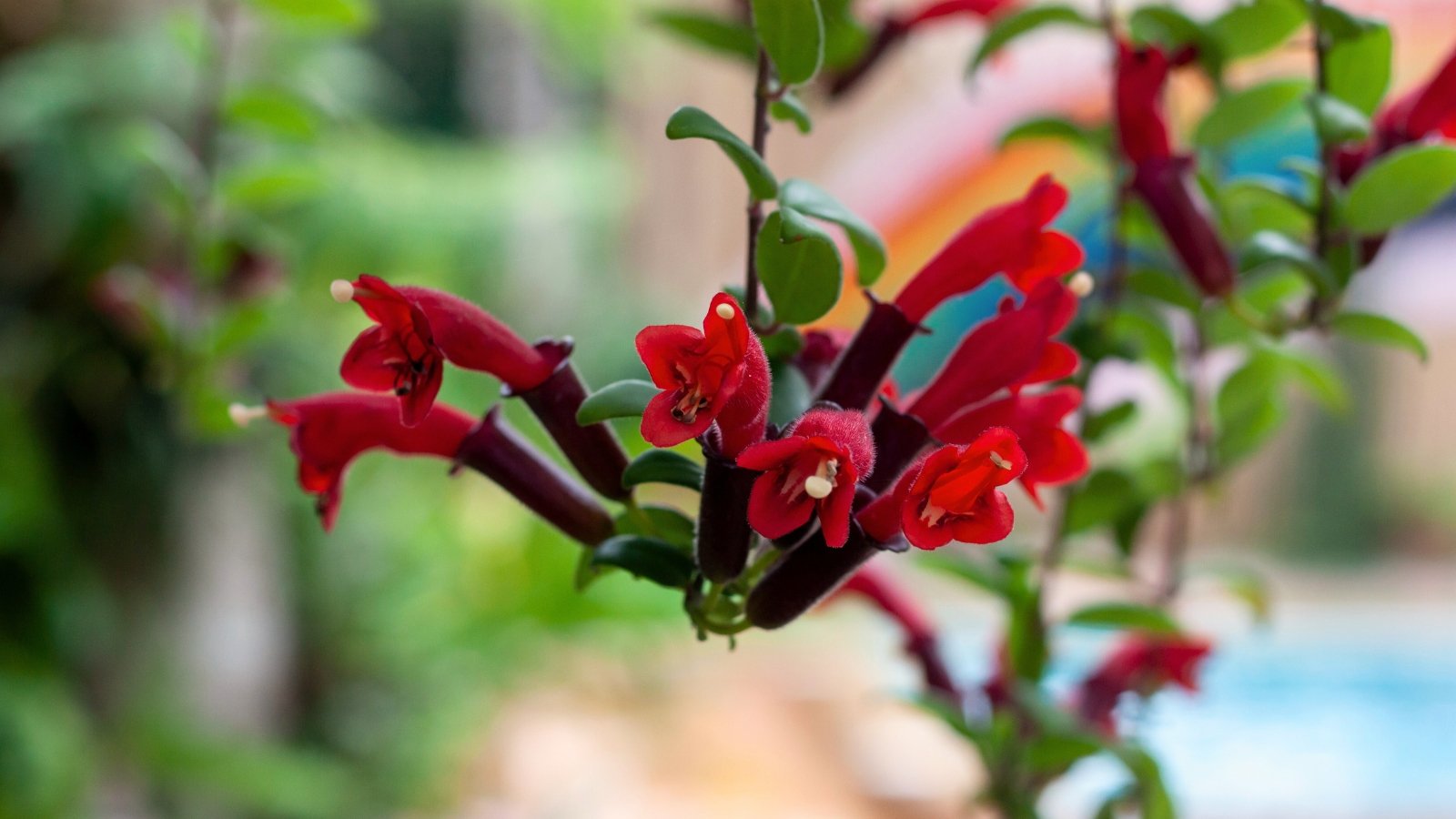
The lipstick plant is striking, with bright flowers that emerge from dark buds. These blooms resemble a tube of lipstick, giving them their interesting common name.
The unusual flowers and attractive foliage make this houseplant a guaranteed kid-friendly favorite. The contrast is sure to capture their attention (and yours) and keep them interested in the growth.
They need the right conditions to flower successfully. Don’t stick them in the dark corners of your home or forget to water them if you want to enjoy their quirky appearance.
